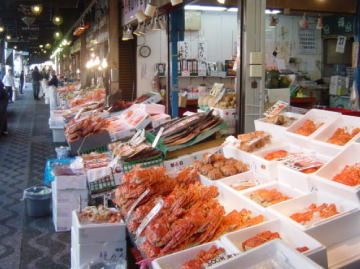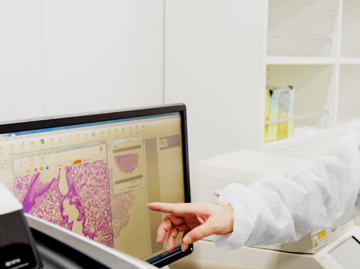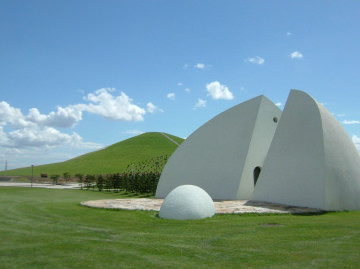
Business Information

Sapporo’s diverse industries
A city selected as a base for enterprises in a wide range of fields

Farming industry: The value of “Made in Hokkaido”
Hokkaido makes up one quarter of Japan’s farmland, and is an important food supply region that accounts for approximately 14% of Japan’s gross agricultural production and 24% of the fishing industry. In the food manufacturing industry, too, both the shipment values and number of establishments are the largest in Japan.
In the Asia region, “Made in Hokkaido” is widely known as a synonym for good-quality, delicious food. High value-added Hokkaido farm and marine products have always been popular, but increasing demand for high-quality foodstuffs, brought about by economic growth in the region, has led to Hokkaido farm and marine products attracting even more attention.
Sapporo, the hub of the economy and logistics in Hokkaido, is home to numerous universities and public research institutions, and an international port and international airport are located in the surrounding areas, making it an ideal location for the accumulation, processing and research & development of Hokkaido farm and marine products.

Bio-industries: an ever-growing bio-industry cluster
With its cool climate, abundant bio resources and concentration of universities and research institutions, Sapporo is blessed with regional characteristics suitable for the bio industry. Many bio industries are located in Hokkaido, especially in Sapporo, where over 120 companies take part in the Hokkaido Bio Technology Industrial Cluster Forum, in which bio enterprises, universities and research institutions form a network to promote exchanges with businesses in Hokkaido and beyond.
In a survey carried out by the European Commission (EU) in 2011, Hokkaido Bio Technology Industrial Cluster Forum was the only Asian cluster to be chosen among 16 distinctive bio clusters around the world. It was rated as a “mature-stage cluster” in line with the globally famous Medicon Valley (Denmark, Sweden) – where medical equipment development enterprises are concentrated – due to its “implementation of high-level research”, “functioning corporate culture” and “satisfactory research & development support”.
In Sapporo, where much of the nation’s high-standard medical technology is mobilized, advanced medical research has been conducted in various fields such as regenerative medicine, cancer treatment, nucleic acid medicine and infectious diseases centering on universities in the city. Joint research with companies is also under way.

IT/digital contents – Sapporo leads “Cool Japan”
Sapporo is one of Japan’s leading IT industry bases that has turned out some excellent enterprises and continues to promote the IT and digital contents industry. In November 2013, these efforts were recognized when it became the first Asian city to be recognized as a member of the UNESCO Creative Cities Network in the field of media and arts.
Every October, No Maps, which hosts conferences, exhibitions, meet-ups (exchange), experiments, and other events, is conducted under the name of Sapporo Creative Convention. To create and accelerate new business, industries, academia and government will together provide a venue for company and creator interaction as well as experiments on advanced technologies and services, as the city of Sapporo aims to become “the most innovative city in the world”.
Utilizing the two strengths of Sapporo, which are the accumulation of advanced research resulting from the concentration of universities and the assembly of IT companies, we established the Sapporo City IoT Innovation Promotion Consortium (Sapporo City IoT Promotion Laboratory) in 2016.
Through collaboration among industry, academia and government, we aim to create new business originating from Sapporo by placing AI and other technologies at the core.

Call centers/back offices, and more
The city’s merits as a BPO base are demonstrated by the countless global enterprises that have chosen Sapporo.
The Japanese–quality high standard of service, reasonable business costs and low risk of natural disaster make the accumulation of high-level human resources possible. Many call centers and BPO centers of global enterprises are located here, and in recent years the city has attracted attention as a location with functions appropriate for head offices, too.

Environmental and energy industries
The nation’s highest potential for renewable energy
Hokkaido has the nation’s highest potential for sunlight, wind power, small hydropower, biomass, geothermal power and other renewable energies. In particular, the amount of wind power generation is ranked first in the nation, and such equipment has been installed mainly along the Sea of Japan thanks to the favorable wind conditions there. As of the end of March 2018, a total of 304 units (ranking top in Japan) were installed with a total installed capacity of 358,745 kW (ranking third in the nation), making it one of the leading wind power generation areas in Japan.
In Hokkaido, demonstration experiments on hydrogen production and utilization through the use of electric power generated from wind power, biogas, and small hydropower have been conducted, and the research and development of domestic cold region tests for fuel cell vehicles and domestic fuel cells for cold climate specifications are being carried out, with expectations for it to become a hub for research and development in hydrogen-related industries.

Tourism industry
Sapporo, a leading tourist city that has been evaluated as an attractive city
As a popular tourist city, Sapporo—which is highly evaluated in Japan as an attractive city—is always ranked at the top in the national municipal attraction degree ranking conducted through private investigation. The total number of tourists visiting Sapporo has reached approximately 15 million per year, and, in recent years, foreign tourists have been increasing year after year due to new international direct flights and relaxed visa issuance requirements, with the number of foreign overnight visitors reaching a record high of 2.7 million in FY 2018. Tourism also brings about a ripple effect on other industries. Cooperation between the tourism industry and other industries is anticipated.
